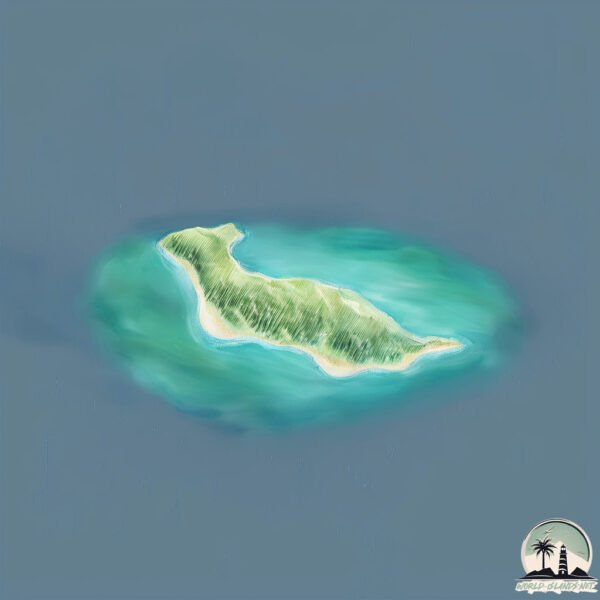Pulau Mantanani Besa

Welcome to Pulau Mantanani Besa, a Tropical island in the South China Sea, part of the majestic Pacific Ocean. This guide offers a comprehensive overview of what makes Pulau Mantanani Besa unique – from its geography and climate to its population, infrastructure, and beyond. Dive into the details:
- Geography and Size: Explore the island’s size and location.
- Climate and Weather: Weather patterns and temperature.
- Topography and Nature: Uncover the natural wonders of the island.
- Infrastructure and Travelling: Insights on reaching, staying, and making the most of your visit.
- News and Headlines: Latest News.
Geography and size of Pulau Mantanani Besa
Size: 2.169 km²
Coastline: 8.8 km
Ocean: Pacific Ocean
Sea: South China Sea
Continent: Asia
Pulau Mantanani Besa is a Small Island spanning 2.2 km² with a coastline of 8.8 km.
Archipel: Greater Sunda Islands – A group of large islands in Southeast Asia, including Borneo, Sumatra, Java, and Sulawesi, known for their rich biodiversity and cultural diversity.
Tectonic Plate: India – A major tectonic plate that initially moved northward at a rapid pace before colliding with the Eurasian Plate. This collision is responsible for the uplift of the Himalayas and the Tibetan Plateau.
The geographic heart of the island is pinpointed at these coordinates:
Latitude: 6.71191373 / Longitude: 116.35247187
Climate and weather of Pulau Mantanani Besa
Climate Zone: Tropical
Climate Details: Tropical Rainforest Climate
Temperature: Hot
Climate Characteristics: This climate is typified by heavy rainfall throughout the year, high humidity, and consistently high temperatures, leading to lush rainforests and rich biodiversity. Seasonal temperature variations are minimal.
Topography and nature of Pulau Mantanani Besa
Timezone: UTC+08:00
Timezone places: Australia/Perth
Max. Elevation: 12 m
Mean Elevation: 11 m
Vegetation: Evergreen Needleleaf Forest
Tree Coverage: 91%
The mean elevation is 11 m. The highest elevation on the island reaches approximately 12 meters above sea level. The island is characterized by Plains: Flat, low-lying lands characterized by a maximum elevation of up to 200 meters. On islands, plains are typically coastal lowlands or central flat areas.
Dominating Vegetation: Evergreen Needleleaf Forest
Dominated by evergreen coniferous trees such as pines and firs, which retain their needle-like leaves throughout the year. These forests are often found in cooler climates. Pulau Mantanani Besa has a tree cover of 91 %.
Vegetation: 6 vegetation zones – Very Highly Diverse Island
Islands in this range are ecological powerhouses, showcasing a wide array of vegetation zones. Each zone, from lush rainforests to arid scrublands, coastal mangroves to mountainous regions, contributes to a complex and interdependent ecosystem. These islands are often hotspots of biodiversity, supporting numerous species and intricate ecological processes.
Infrastructure and Travelling to Pulau Mantanani Besa
Does the island have a public airport? no.
There is no public and scheduled airport on Pulau Mantanani Besa. The nearest airport is Kudat Airport, located 57 km away.
Does the island have a major port? no.
There are no major ports on Pulau Mantanani Besa. The closest major port is KUDAT, approximately 57 km away.
The mean population of Pulau Mantanani Besa is 95 per km². Pulau Mantanani Besa is Gently Populated. The island belongs to Malaysia.
Continuing your journey, Gaya is the next notable island, situated merely km away.
高清视频世界最佳海岛风情TOP50——沙巴岛


Malaysia is classified as Developing region: Regions characterized by lower income levels, with economies in the process of industrialization and modernization. The level of income is Upper middle income.
News – Latest Updates and Headlines from Pulau Mantanani Besa
Stay informed with the most recent news and important headlines from Pulau Mantanani Besa. Here’s a roundup of the latest developments.
Please note: The data used here has been primarily extracted from satellite readings. Deviations from exact values may occur, particularly regarding the height of elevations and population density. Land area and coastline measurements refer to average values at mean high tide.
